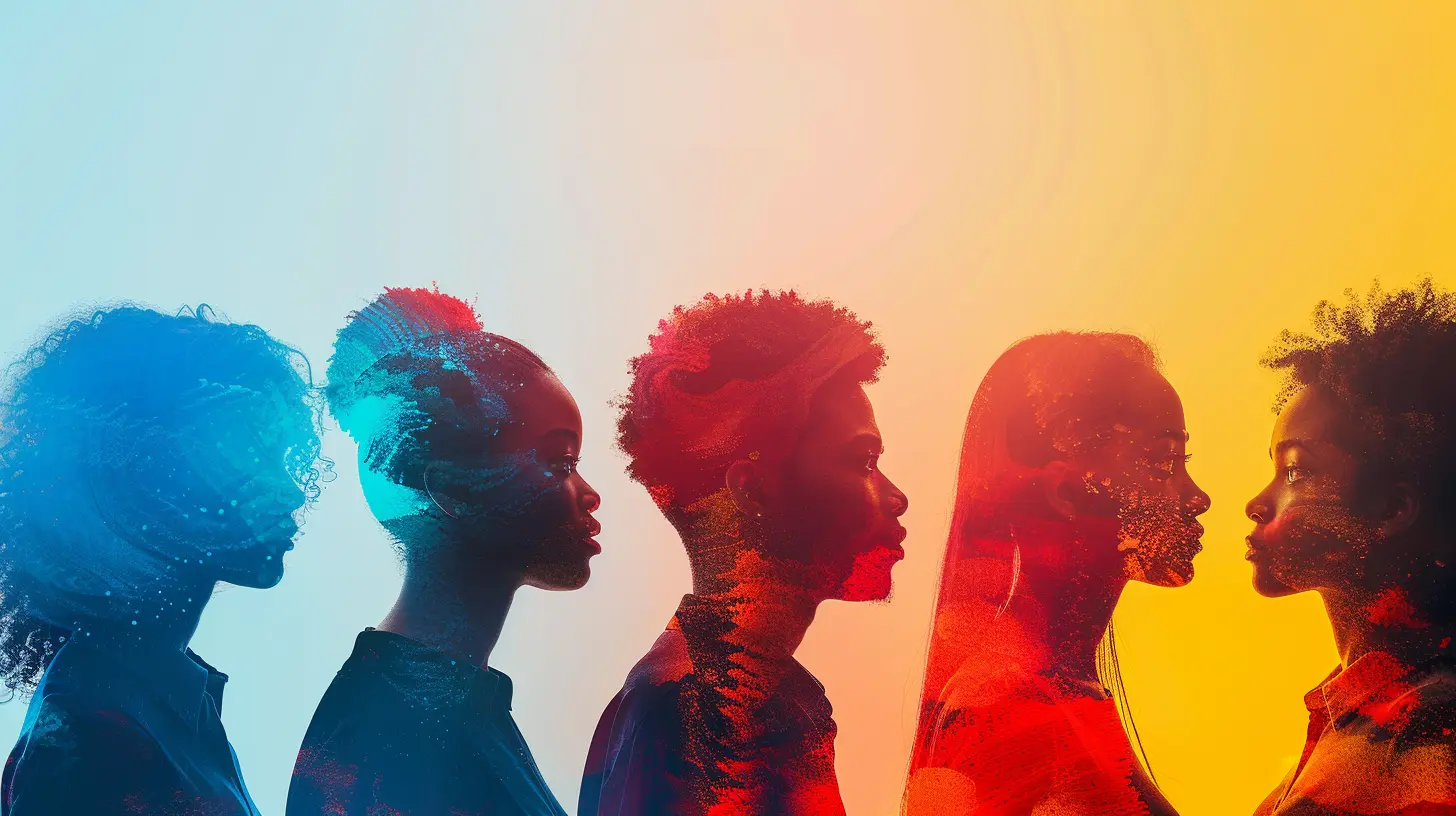Addressing Unconscious Bias in Corporate Hiring Practices
1 November 2025
Hiring is a critical function in any organization. The team you build ultimately shapes the culture, drives the business forward, and determines its long-term success. While most companies aim to create a diverse and inclusive workplace, there's a sneaky culprit that silently affects decisions—unconscious bias.
It's not intentional; that's the thing about "unconscious" bias. But just because it's unintentional doesn't mean it doesn't have a lasting impact. Let’s explore how these hidden biases seep into corporate hiring practices and, most importantly, how we can address them effectively. 
What Exactly Is Unconscious Bias?
Before diving in, let’s break this down. Unconscious bias, also called implicit bias, refers to the underlying attitudes or stereotypes we hold toward individuals or groups without even realizing it. Yes, it’s a part of being human. Our brains are wired to categorize information quickly as a survival mechanism. Unfortunately, this instinct can play out in ways that marginalize others.Think of it like an iceberg. The visible conscious layer might be your commitment to hiring the "best candidate." But lurking beneath, the unconscious layer might associate a certain name, accent, or school with being a "better fit" for the team. 
How Does Unconscious Bias Show Up in Hiring?
Let’s be real: the hiring process should be about identifying the most qualified person for the job, right? But here’s where unconscious bias throws a wrench into that straightforward idea.1. Resume Screening
Ever heard of résumé bias? Studies show that résumés with "ethnic-sounding" names receive fewer callbacks than identical ones with "white-sounding" names. That’s bias at work. Without realizing it, hiring managers might associate certain names with stereotypes about work ethic, communication skills, or cultural fit.2. Interview Impressions
We all want to “click” with candidates, but sometimes that gut feeling could come from shared similarities rather than actual qualifications. For example, if an interviewer shares the same alma mater or hobby as the candidate, they might subconsciously favor them. It feels harmless, but it’s not fair.3. "Cultural Fit" Excuse
This is a big one. Companies often reject candidates for not being a “cultural fit.” But let’s unpack that for a second. Does "cultural fit" mean aligning with company values, or is it just code for hiring people who look, think, and act like everyone else already on the team?
Why Should Companies Care About Addressing Unconscious Bias?
You might be thinking, “Okay, so bias exists. Isn't it just a natural human trait? Why should companies bother fixing it?” Great question. Here’s why:1. Diversity Drives Innovation
Diverse teams bring different perspectives, which lead to better decision-making and innovation. Imagine a brainstorming session where everyone has the same background and experiences. It’s like eating plain toast every morning—safe but uninspiring. Diversity spices things up like a buffet of new ideas.2. It Protects Your Reputation
In this age of social media and transparency, a lack of diversity in your workforce doesn’t go unnoticed. If biases are left unchecked, your company risks being labeled as outdated or exclusionary. Trust me, no one wants their brand trending on Twitter for the wrong reasons.3. Access to a Larger Talent Pool
Bias narrows your view. By addressing it, you open the floodgates to untapped talent. Think about how many brilliant candidates might have been overlooked because of something as arbitrary as an unconventional name or a nontraditional career path.
Common Types of Unconscious Bias in Hiring
To tackle the problem, you need to recognize the different types of unconscious bias. Here are a few culprits to watch out for:1. Confirmation Bias
Ever caught yourself making a snap judgment and then looking for evidence to support that judgment? That’s confirmation bias. For example, if you assume a candidate who worked at a prestigious company must be competent, you might overlook red flags in their experience.2. Affinity Bias
This happens when you gravitate toward people who remind you of yourself. It’s natural to feel more comfortable with someone who shares your interests, background, or communication style, but it’s not a fair measure of someone's abilities.3. Halo Effect
This one’s tricky. If a candidate has one standout trait (e.g., they’re super charismatic), you might subconsciously overlook their weaknesses in other areas. It's like falling for a flashy sports car without checking if it has an engine.4. Gender Bias
Unfortunately, this still happens. Studies have shown that people often associate leadership roles with men, even when a woman has the same qualifications. The result? Women are sometimes passed over for roles they’re perfectly capable of handling.5. Age Bias
Ageism runs both ways. Young candidates might be labeled as inexperienced, while older ones might be unfairly written off as not tech-savvy or adaptable.Practical Strategies to Counter Hiring Bias
Okay, we’ve talked about the problem long enough. Let’s get into solutions. Here are some actionable steps companies can take to combat unconscious bias in hiring:1. Blind the Résumés
One simple fix is anonymizing résumés by removing names, photos, and other identifiers during the initial screening. This forces hiring managers to focus on skills, experience, and qualifications rather than surface-level traits.2. Standardize Interview Questions
Create a structured interview process where every candidate is asked the same set of questions. This reduces the temptation to go off-script or make subjective judgments based on personality or rapport.3. Diverse Hiring Panels
Having a diverse group of people on the hiring panel can help balance out individual biases. Each decision-maker brings a unique perspective, making the process more inclusive.4. Use Technology (But Be Cautious)
AI tools can help screen candidates objectively, but keep in mind that technology isn’t bias-proof. After all, algorithms are created by humans who might have their own biases. Vet your tools carefully.5. Invest in Unconscious Bias Training
Training workshops can help employees become more aware of their biases and learn strategies to mitigate them. Sure, training alone won’t erase bias, but it’s a step in the right direction.6. Set Diversity Hiring Goals
Some may argue that diversity targets feel forced, but they can act as a guideline to ensure your talent pipeline stays inclusive. Just make sure they’re genuine goals, not empty PR gestures.Creating a Bias-Free Hiring Culture
Addressing unconscious bias isn’t just about checking off action items—it’s about creating a culture that values inclusivity. Leaders need to walk the talk and embed fairness into every aspect of the hiring process. That means holding not just HR but everyone in the company accountable.Think of it like maintaining a garden. You can’t just plant flowers and expect them to thrive. You need to weed out what doesn’t belong, nurture what does, and keep doing it consistently.
In Conclusion
Unconscious bias isn’t something we can magically eliminate overnight, but we can certainly take steps to minimize its impact. It starts with awareness and a genuine commitment to doing better. Remember, diversity isn’t just a feel-good initiative—it’s a business imperative. The next time you’re hiring, think about how you can create a level playing field where every candidate truly has a fair shot.The future of work is inclusive. And the sooner we address unconscious bias, the closer we get to ensuring everyone has a seat at the table.
all images in this post were generated using AI tools
Category:
Diversity And InclusionAuthor:

Susanna Erickson
Discussion
rate this article
1 comments
Brick Wheeler
Awareness blooms, biases fade; fairness in hiring crafts brighter futures.
November 5, 2025 at 4:47 AM

Susanna Erickson
Thank you for your insightful comment! Promoting awareness is indeed crucial for creating a fairer hiring landscape.


